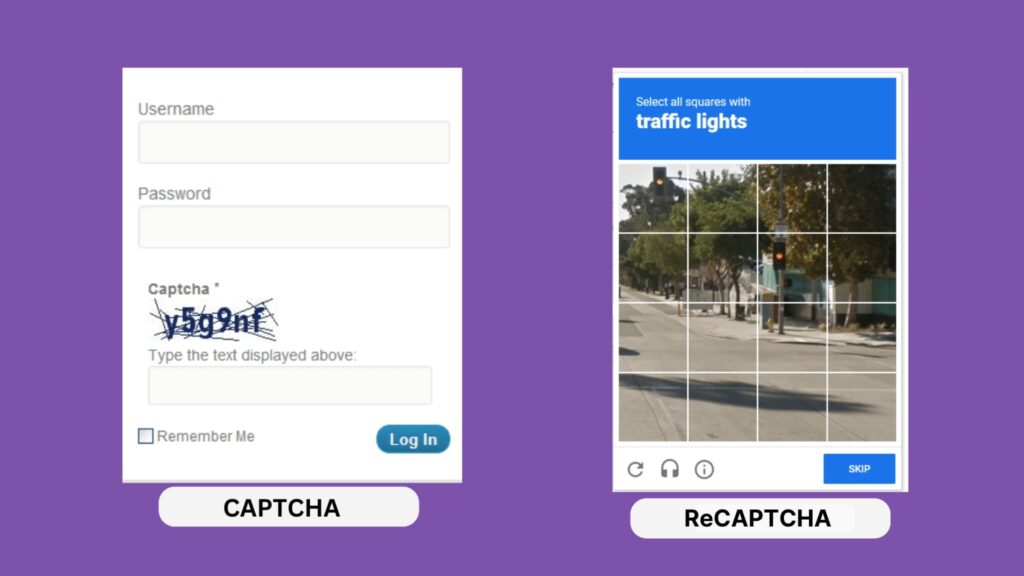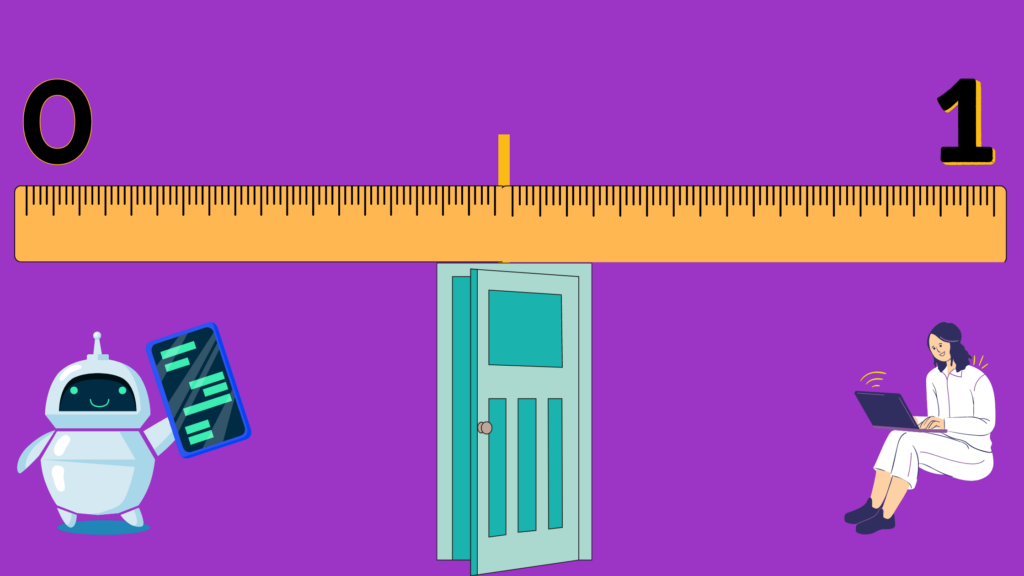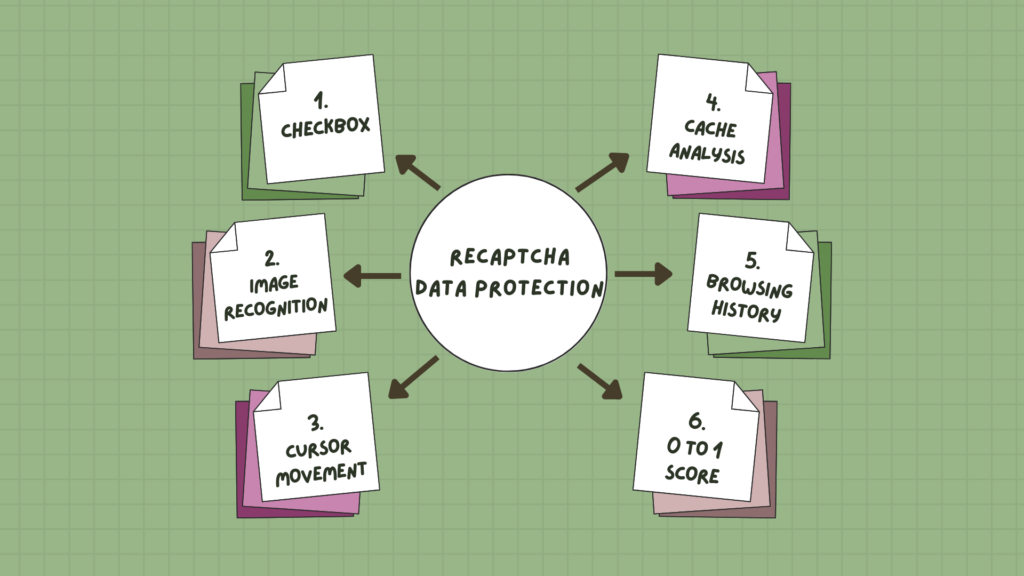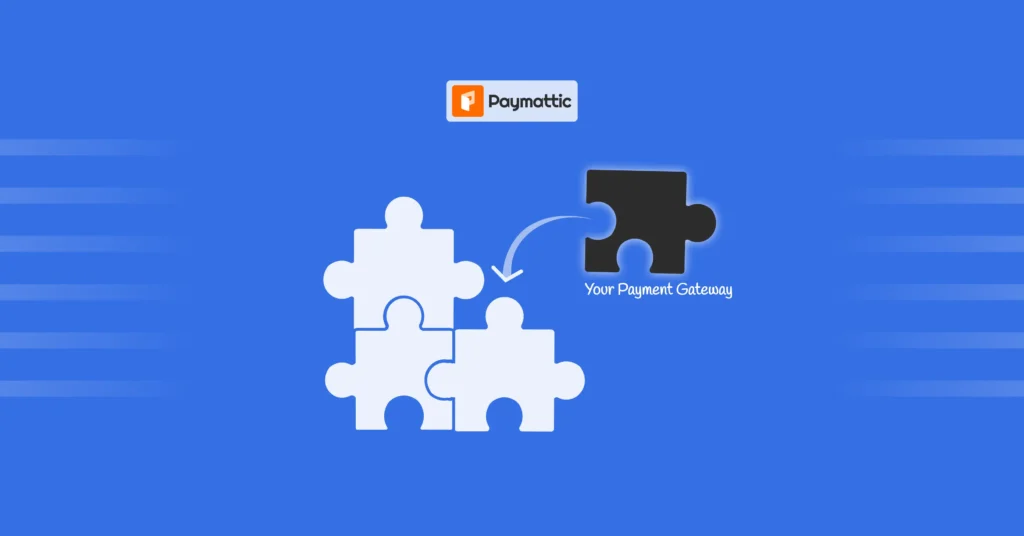
How Google ReCAPTCHA Works in Data Protection?
Table of Content
Download Paymattic – it’s Free!

Subscribe To Get
WordPress Guides, Tips, and Tutorials
We will never spam you. We will only send you product updates and tips.
Do you know nearly half of the internet traffic is not human? In 2021, 47.4% of internet traffic came from automated bots and it has increased by 5.1% over the previous year.
Protecting websites’ data from malware attacks has become a fundamental concern for companies. Website owners implement many security systems to keep the data safe but the spammers always find their way through.
Among the unsung heroes of online defense against spamming, Google ReCAPTCHA stands at the top with a formidable shield protecting the gates of countless websites.
Presenting users with various challenges, it separates bots and humans and prevents bots from accessing web pages. Introducing ReCAPTCHA to your online service page has become an essential thing to do these days.
So in this article, we’ll talk about how Google ReCAPTCHA works in data protection and why you need to configure it on your website or form page.
What is Google ReCAPTCHA?
Who hasn’t encountered a ReCAPTCHA? You know what we’re talking about. Those irritating challenges you’ve to go through before entering a website or online service page to prove yourself a human.
Google ReCAPTCHA is an automated technology developed by Google to differentiate bots from humans. It’s designed to prevent spam, abuse, and malicious attacks and protect websites and online pages.
A ReCAPTCHA is usually a pop-up that comes with different challenges or tests to prove that you’re a human. These tests typically involve solving puzzles, identifying objects, or verifying specific information.
Once you‘ve successfully completed the test, you’ll demonstrate your human identity and get access to the webpage.
Difference between CAPTCHA and ReCAPTCHA
CAPTCHA and ReCAPTCHA just like they have similarities in the name, their primary concern is also similar. But there is some difference in their functionality. Just like the ReCAPTCHA, the CAPTCHA test is also designed to identify humans and bots.
It’s an automated Turing test to place apart robots and humans. Although CAPTCHA is designed to block automated bots, CAPTCHAs themselves are automated.
Some websites are still using the classic CAPTCHAs to verify user identity by asking them to identify letters. Primarily the letters are kept distorted, usually containing a string of alphanumeric characters, and users are required to recognize them which is difficult for bots.
To pass the test you must interpret the distorted letters into the correct formation and submit.
The idea behind the technology is that a computed program such as a bot is unable to interpret the distorted letters. The best they can do is input some random letters to pass the test.
Thus, they’ll fail on it and get blocked by the website while humans are accustomed to this and can easily crack it to continue their journey.

At the end of the day, the goals are simple: safety and security.
Jodi Rell
But using machine learning advanced bots are able to sort the distorted letters. So, Google has introduced ReCAPTCHA developed with a number of different challenges to identify between humans and bots.
The underlying technology behind ReCAPTCHA relies on advanced risk analysis algorithms and machine learning systems.
Instead of distorted letters, it introduces other forms of challenges. Sometimes you have to solve a puzzle, sometimes you need to identify similar objects and sometimes just click on a checkbox.
Have you ever clicked on the “I’m not a robot” checkbox, or checked pictures with crosswalks or traffic lights just to verify your human identity?
I know certainly you experienced that. Automated bots have trouble decoding this. This is how Google ReCAPTCHA works to protect websites from malicious activities.

Subscribe Newsletter
Subscribe to our newsletter for updates, exclusive offers, and news you won’t miss!

Why do you need Google ReCAPTCHA security?
As businesses are increasing and technologies are getting updated, scammers and spammers are finding their way too. That’s why you need to have ReCAPTCHA security for your website before someone makes an interaction with it.
In 2021, 42.3% of internet users weren’t human, as bad bots generated more account takeovers and online fraud.
What happens when a spammer enters your site?
- They can manipulate your website’s contents
- May flood the comment section
- Can exploit the contact forms with spammy links
- Make fake registration to spreading malware
- Gaining access to sensitive user information by utilizing potential security vulnerabilities
- SEO manipulation
- Can take ownership of a website or online page
In short, if a spammer gets entry to your website, you’re at a high risk of losing control of it.
To mitigate this risk, nowadays most of the websites are protected by ReCAPTCHA to reduce the entry of suspicious traffic and minimize the associated negative consequences.

ReCAPTCHA V3 vs V2 which one is better?
If you are looking for a security solution for your website, then you should go for ReCAPTCHA instead of CAPTCHA. Another question arises, which version to go with? As there are multiple versions of ReCAPTCHA running so far.
Tools like the Paymattic WordPress plugin offer both versions so you can choose the version you want to integrate into your form or website to improve security.

Now let me give you some ideas on ReCAPTCHA V2 and V3 to help you decide on which version to use.
ReCAPTCHA V2
ReCAPTCHA V2 and V3 are both designed to aim for the same service to give protection to websites from malicious bots.
However, there are three versions available in ReCAPTCHA V2 itself.
- “I’m not a robot” checkbox
- Invisible ReCAPTCHA
- ReCAPTCHA Android
I’m not a robot checkbox:

This is the box that is required to check when you want to fill out a form or get entry to a website protected by ReCAPTCHA V2. After clicking the checkbox sometimes the risk analysis algorithm lets you through or challenges you with an image CAPTCHA.
You must remember, you’ve clicked images with “fire hydrant”, “traffic lights” or “buses”, to be allowed to interact with a website.
This option is the easiest and the most popular version of ReCAPTCHA used by millions of websites.
Invisible ReCAPTCHA:

This is what you’ll get to see when invisible ReCAPTCHA is being utilized in any form. No need to check the box. By tracking the cursor movement, it’ll identify whether you’re a bot or human.
It gives a much better user experience compared to the “I’m not a robot” checkbox. It improves the conversion rate of submitting a form.
One disadvantage is it’s less strict than the checkbox version and lets some spam slip by.
ReCAPTCHA Android:
With the increasing number of mobile devices, an Android version of ReCAPTCHA is developed to provide protection against spam and malicious activities on Android applications.
If the service suspects a user’s interaction with the app is not natural and it might be a bot instead of a human, then it serves a CAPTCHA that must be solved before continuing.
It gives you access to a library with native APIs, which you can incorporate right away into an application. This version works by using a site key and a ReCAPTCHA token with the SafetyNet service API.
ReCAPTCHA V3
Unlike V2, ReCAPTCHA V3 is also invisible. Now a question can arise, how does ReCAPTCHA V3 work? Is it the same as V2 invisible ReCAPTCHA? Does it have a checkbox?
Let me give you a clear idea of how ReCAPTCHA v3 work. It determines whether a website visitor is a bot or not on the basis of scoring. For each request that your user makes on the website, ReCAPTCHA V3 makes a score between 0 to 1.
If the score is close to 0, it’s likely a bot. If it is close to 1, it’s more likely a human trying to interact.
When you launch a site, it’s important to establish the scoring threshold that determines how ReCAPTCHA v3 works. This can be accomplished by reviewing your site traffic through the Google Administrator Console for ReCAPTCHA.
When ReCAPTCHA provides you with a score, you’ve to decide what you’re going to do with it. Whether allow or block users at a higher or lower score.

Otherwise, it can give a terrible experience to a real user thinking of them as a bot, by showing them ‘form is not working’ or not giving them the chance to check the checkbox.
It always tracks the user’s behavior and learns about them by analyzing, observing, and scoring it.
While ReCAPTCHA V2 tracks the mouse movement of the form page that is integrated, V3 tracks cursor movement on every page. As a result, the overall site speed got affected by it.
On the other hand, ReCAPTCHA V2 frustrate the users while they’re about to log in, make a purchase or subscribe to a newsletter.
Therefore, it reduces the conversion rate compared to the V3.
So, if you’re thinking about which version is better, then it depends on your choice. Currently, according to DATADOME ReCAPTCHA V3 is used by 1.2 Million+ websites and V2 is used by 10 Million+ websites.
How Google ReCAPTCHA works to protect data?
Ever wonder how Google ReCAPTCHA works actually in protecting your data? Let’s explore it!
Well, we all are familiar with ReCAPTCHA challenges. Whether it was a text box challenge, an image recognition, or an audio challenge, we faced them.
A V2 ReCAPTCHA challenges like “I’m not a robot” only appears when Google thinks the interaction is suspicious. Then it provides to tick a checkbox. Sometimes it lets the visitor continue their journey just after ticking the checkbox.
Other times it may challenge you with an image recognition or audio recognition task to determine your identity. It totally depends on Google’s level of confidence that you’re a human.
An image recognition challenge appears mostly with 9 or 16-square-size images. The image may be one particular place that includes many objects or may each be a different image.
You then have to identify the images with certain objects, such as traffic lights, bicycles, buses, etc.
If your response matches the responses submitted by the majority of other users who have gone through the same test, then your answer is considered “correct” and you pass the test.
Identifying certain objects from blurry photos is a very tough job to do for computer robots.
Due to the lack of clear images, even advanced Artificial Intelligence (AI) faces difficulties in accurately recognizing objects in such images. That means websites with ReCAPTCHA installed have more interaction with humans than bots.
The V3 and V2 invisible ReCAPTCHA protect data by analyzing the cache data and the cursor movement. When someone is about to click the checkbox definitely there’ll be some random movement.
This type of tiny unconscious movement bot can’t mimic. ReCAPTCHA also gives protection to websites by analyzing visitors’ cache data and historical behavior.
ReCAPTCHA may assess the cookies stored by the user’s browser and the browsing history of the device to differentiate between an automated bot and genuine human interaction.

Although the ReCAPTCHAs privacy policy is not GDPR compliant, for digital security website owners still rely on Google ReCAPTCHA for data protection.
Introducing ReCAPTCHA for data protection in Paymattic
Having a plugin installed in your WordPress website for ReCAPTCHA security is the easiest option you can think of. Most of the time through user’s data submission spam gets entry to the website.
So, the form you’re providing to collect data has to be protected.
And when it comes to this, which plugin is better than Paymattic with a multilayer security system?
With Paymattic, you can create your data collection form without any hassle and give multilayer security to it. It provides you the option of ReCAPTCHA V2 and V3 and allows you to choose the version you want to configure with your form.
Apart from the Google ReCAPTCHA, this plugin also provides security features like
- Honeypot
- Turnstile
- Password field
So, leave the doubt about security and create a secured form with drag and drop system of Paymattic.
Wrapping Up
In a world where scammers are always ready for malicious attacks and online security is paramount, Google ReCAPTCHA emerges as a powerful spam protector.
ReCAPTCHA fortifies millions of websites against spam, abuse, and malicious activities.
In the digital landscape plagued by automated threats, safeguard your data by integrating ReCAPTCHA into your websites or forms.
Join the thousands already enjoying Paymattic Pro!










Leave a Reply